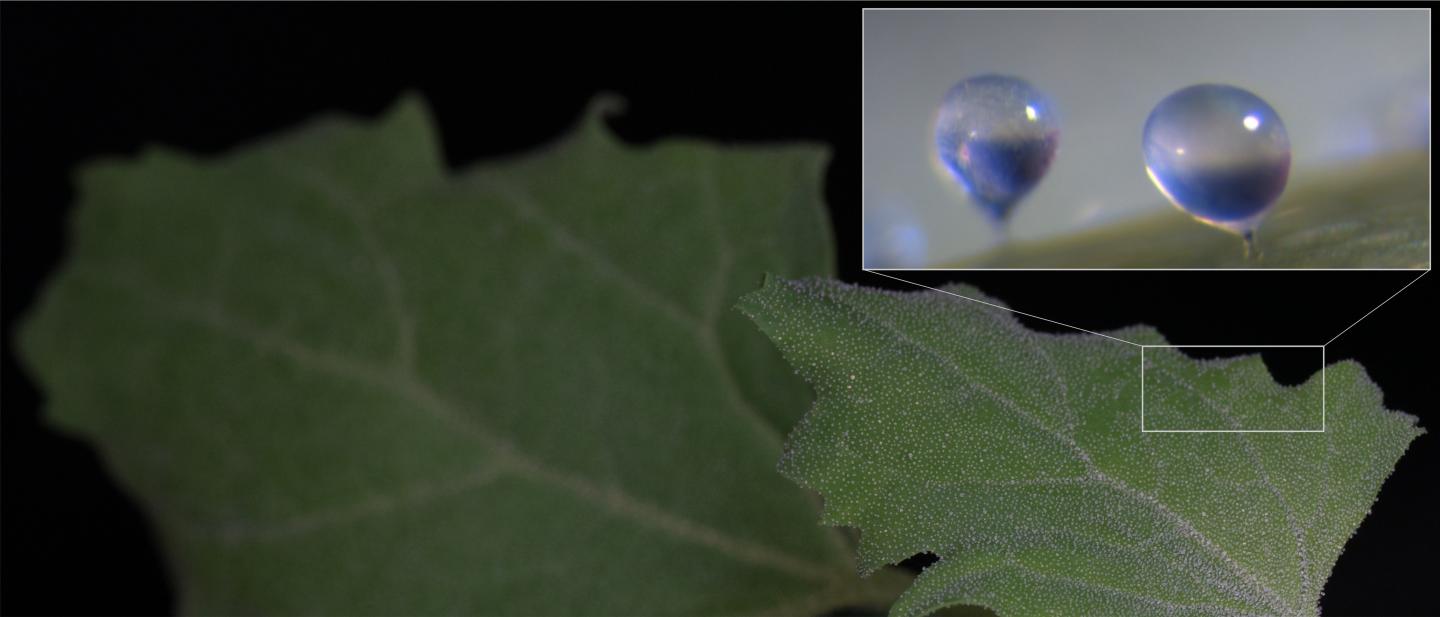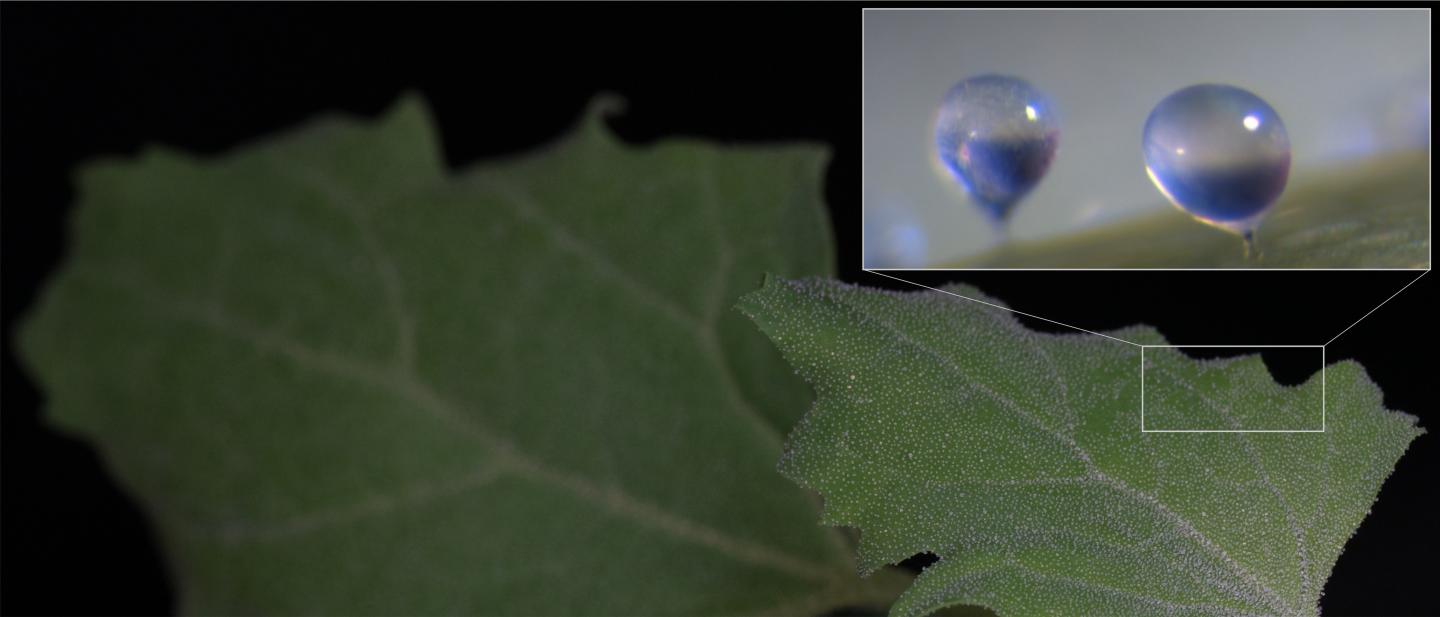
Credit: Jennifer Böhm
A growing world population means that more food is needed which in turn may require more land to grow food crops. More agriculture, however, results in increased irrigation, particularly for food crops such as maize and wheat – especially in dry regions. Combined with the use of fertilizer, this leads to salt accumulation in soils. To be able to use saline soils, naturally salt-tolerant plants, the so-called halophytes, are of great interest. The pseudo-cereal quinoa (Chenopodium quinoa) is one of them. Quinoa originated in the Andean region and is adapted to harsh environmental conditions. In the South American mountain range, the cereal-like plant has been used as a food crop for 7000 years. Gluten-free and high in vitamins, the edible seeds have now found their way into European supermarkets.
Quinoa uses bladder cells for desalination
Quinoa, which is rich in minerals and vitamins, sequesters excessive salt to hair-like bladder cells. This morphological adjustment makes the plant tolerant to saline conditions. These final storage sites for salt connected to the outer cell layer of the leaves prevent toxic levels of sodium chloride (NaCl), also known as table salt, from building up within the leaf tissue. Led by Professor Rainer Hedrich from the University of Würzburg, an international team of researchers comprising scientists from Munich, Genoa (Italy), Hobart (Australia) and Shanghai (China) and Riyadh (Saudi Arabia) has now figured out the molecular mechanism of how bladder cells store salt. They have published their results in the journal Current Biology.
Salt transport from the soil into the salt bladder
When quinoa is exposed to saline soils, sodium and chloride ions travel from the root through the shoot and the leaves into the salt bladders where they are ultimately stored in vacuoles. On their way into the salt bladders, the ions have to overcome several membrane barriers. This is accomplished by transport proteins which are specialised for sodium (Na+) and chloride (Cl-) ions.
Compared to crops which are not salt-tolerant, these transport proteins do not have to be reassembled with increasing salt load, rather they are already in place before the stress begins. "This strategy enables quinoa to transfer the suddenly occurring salt immediately to the final storage without any further gene regulation steps," Hedrich says.
Sodium channel is a one-way street
The properties of this sodium channel not only assure that sodium ions are continuously transported from the leaf into the bladder cells where they can be stored in high concentration. "What's special about this mechanism is that it prevents backflow of sodium and hence the Na+ leakage into the leaves even when the stored sodium reaches very high levels," Dr. Jennifer Böhm, the first author of the study, says. The sodium channel thus functions as a safety valve, making it the key component of final salt storage in the salt bladders.
When the salt is in the leaves, the Na+ and Cl- ions need to be transported through the plasma membrane into the cytosol (intracellular fluid) of the salt bladders. Analogously to the sodium ions, the plant assures the directional transport of chloride ions into the cell.
In plants, rising sodium chloride levels in the cytosol are toxic for many metabolic processes. Therefore, quinoa sequesters the salt in membrane-enclosed vacuoles outside its metabolically active parts. This second membrane which sodium and chloride ions need to pass is called the tonoplast. Here, too, salt transport takes place in one direction only.
Transfer to final storage yet to be studied
"This study has provided fundamental insights that will allow us to selectively breed salt-tolerant crops in the future," Hedrich says. "We have shed light on the molecular components of salt storage. But we want to further investigate how the salt is transferred from the leaves to the final storage site," Böhm says. The salt has to be transported through a small tunnel-like connection, the stalk-like cells between salt bladders and leaf epidermis.
###
Media Contact
Prof. Dr. Rainer Hedrich
[email protected]
49-931-318-6100
@Uni_WUE
https://www.uni-wuerzburg.de/
Related Journal Article
http://dx.doi.org/10.1016/j.cub.2018.08.004





